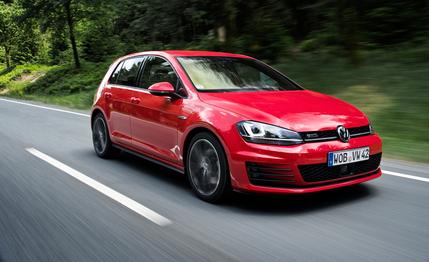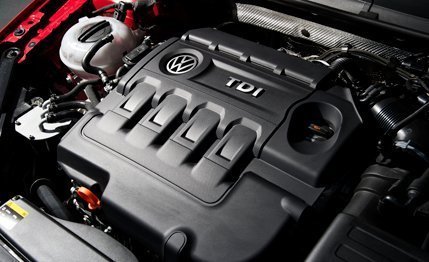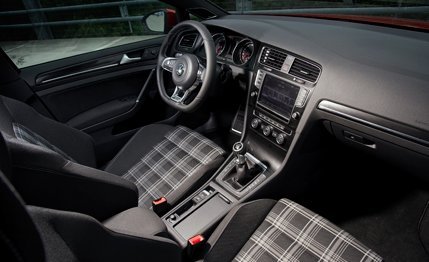
 First Drive Review
First Drive Review
It’s hard to determine which Volkswagen products enjoy fiercer loyalty—performance models like the GTI and Jetta GLI or the efficient TDI diesels. The performance and economy subsets are diametrically opposed but equally well executed by the German car brand. The GTI is a regular on our 10Best Cars list, and we’ve seen 40-plus mpg from various TDI models over the years. What could be described as a GTI with a diesel engine, the GTD is a sort of internal reconciliation between these two priorities.
Like the GTI, the GTD sits 0.6 inch lower than a regular Golf on a similar strut-front, multilink-rear suspension. On the Euro-spec model we sampled, the XDS+ brake-based limited-slip function is standard, and adjustable dampers, called dynamic chassis control, are available. Despite being longer, wider, and more spacious than its predecessor, the 2014 GTD is lighter by a claimed 70 pounds. This generation of the GTD is likely to be similar to the GTI in one other important way: U.S. sales are almost certainly in its future. Volkswagen’s North American team tells us they want the car and they have a case for it; it’s now a matter of hammering out the details of when and how much. The answer to the first question is hazy, but pricing should land around $27,000, or $1000 more than a base GTI. As with the GTI, expect both three- and five-door hatchback models.


The Name Is EA288—the Numbers, a Little Sexier
To propel its lower curb weight, the GTD gets a more powerful four-cylinder engine. The EA288 diesel shares its cylinder dimensions and spacing with the outgoing TDI diesel, but everything else about it is new. The block and the head are revised and use separate cooling circuits to help the engine reach operating temperature faster, the intercooler is integrated into the intake manifold, fuel pressure gets upped from 23,000 psi to 26,000 for finer control over fuel delivery, and the turbo is new. The upshot is 184 horsepower at 3500 rpm and 280 lb-ft at 1750. Those are improvements of 14 horsepower and 22 lb-ft over the last GTD and 44 in each measure over the basic TDI engine we know here in the U.S.
The extra push is immediately apparent. Expect a 0-to-60-mph time of about seven seconds and acceleration that continues unabated long beyond legal speeds on U.S. roads. On the autobahn, the GTD felt strong all the way to 120 mph. As with the four-cylinder TDI found in other VWs, there’s a notable drop in push beyond the power peak, but that drop is lessened with this new engine. Given that this diesel makes two more lb-ft of torque than the Ford F-150’s base V-6, downshifts from the snappy DSG can result in an abrupt surge forward. We’re typically looking for this sort of behavior, but commuters might not be prepared for the jolt.


We also drove a manual-equipped car and loved the slick, direct action of the six-speed, as well as the thoughtful detailing of the shifter. A tiny work of art, it gets dimpled golf-ball surfacing and perches on a split silver tee. The clutch action is heavier and its takeup smoother compared with the sixth-gen car’s, but there’s still not a lot of feel. The brake and accelerator pedals are now 0.6 inch farther apart than the sixth-gen car’s, which is one change we’d ask Volkswagen to undo. Even with size 15s, your author found that heel-and-toeing took more focus than it should. Other drivers simply gave up trying.